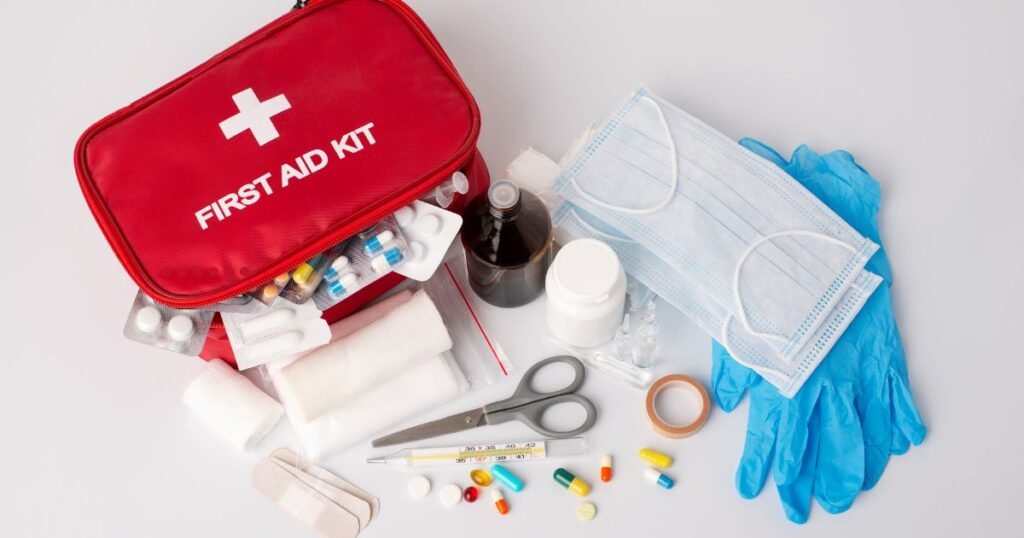Ice bags are simple yet indispensable tools used in a variety of contexts, from medical emergencies to everyday situations. Their ability to provide quick relief and convenience makes them a vital item in households, workplaces, and healthcare settings.
In this article, we will explore the significance of ice bags, their applications in first aid, their use in everyday life, and the factors that make them an essential tool for many.
What Are Ice Bags?
Ice therapy bags are flexible, durable bags designed to hold ice or ice cubes, which can be applied to injuries or used for cooling purposes. Typically made from strong plastic or other materials that can withstand the cold, these bags are designed to be leak-proof and comfortable to use. The main purpose of ice bags is to allow easy application of cold therapy to reduce swelling, numb pain, and treat injuries, among other uses.
Ice bags are available in various sizes, from small bags for localized pain relief to larger bags for use in more significant areas, such as a swollen knee or back.
Ice Bags: User Reviews, Price, and Availability
| Platform | Ice Bag Type | Price Range | Availability | User Rating (Out of 5) | Common Comments |
| Amazon | Standard Ice Bags | $5 – $20 | In stock | 4.5 | “Great for sports injuries” “Convenient and durable” |
| Walmart | Gel Ice Bags | $8 – $25 | In stock | 4.2 | “Long-lasting cold effect” “Good for large injuries” |
| Target | Reusable Ice Bags | $6 – $15 | In stock | 4.4 | “Eco-friendly” “Perfect for everyday use” |
| CVS Pharmacy | Ice Packs with Strap | $7 – $18 | Limited stock | 4.3 | “Hands-free option” “Comfortable to use” |
| eBay | Various Ice Bags | $4 – $18 | In stock | 4.1 | “Affordable” “Slightly less durable” |
Types of Ice Bags
While all ice bags serve a similar purpose, there are different types of ice bags available, each suited to a specific application:
- Standard Ice Bags: These are the most common types and are used primarily for first aid and injury treatment. They are available in various sizes and usually come with a screw-on cap or twist closure.
- Gel Ice Bags: These ice bags are filled with a gel substance that remains cold for a longer period than regular ice cubes or crushed ice. They are often used for more prolonged relief and can be heated or frozen, depending on the user’s needs.
- Ice Packs with Strap: These ice bags feature a strap or Velcro attachment that allows the bag to be secured around the injured area, such as the knee or shoulder. These types of ice bags are particularly useful for hands-free use.
- Reusable Ice Bags: These ice bags are designed to be refilled with ice, making them more eco-friendly and cost-effective. Reusable ice bags for injuries are typically made from durable materials like nylon or rubber, which can withstand multiple uses without breaking or tearing.
Prices and Availability
- Amazon offers a wide range of icebags, from standard types to more specialized models like gel packs and reusable bags. Prices generally range from $5 to $20, depending on size and quality.
- Walmart offers icebags starting from $8 and going up to $25.
- Target features a selection of reusable icebags, with prices starting at $6.
- CVS Pharmacy has a variety of ice packs with straps, priced from $7 to $18.
- eBay offers a range of icebags at lower prices, from $4 to $18, though the durability may vary based on the seller.
Ice Bags in First Aid: Immediate Relief for Injuries
Reducing Swelling and Inflammation

Swelling and inflammation are typical responses to injury, especially in soft tissue. When a muscle or ligament is strained, or when there is a bruise or contusion, the affected area often becomes swollen due to fluid accumulation. Applying ice to the injury helps to constrict blood vessels, reducing blood flow to the area. This process limits the swelling and the amount of fluid that can accumulate in the tissues.
Ice packs for swelling are highly effective for minimizing discomfort and accelerating recovery. By keeping the affected area elevated and applying ice consistently for 15-20 minutes every hour, the swelling can be managed, and healing can begin more swiftly.
Numbing Pain

In addition to reducing swelling, cold therapy packs are highly effective at numbing pain. The cold temperature disrupts nerve signals, effectively dulling the pain sensations in the affected area. For example, when someone sprains their ankle or bumps their head, the immediate application of an icebag can alleviate the intensity of the pain, offering quick relief before more comprehensive medical attention can be sought.
First Aid Protocols with Ice Bags

When using an icebag in first aid, it is important to follow proper guidelines for optimal results:
- Apply Ice Immediately: As soon as an injury occurs, applying ice should be done promptly. The quicker the cold is applied, the more effective it will be in reducing swelling and pain.
- Do Not Apply Ice Directly to Skin: Ice should never be placed directly on bare skin, as it can cause frostbite. Always wrap the icebag in a cloth or towel before application.
- Use in Intervals: Ice bags should be used in 15 to 20-minute intervals to prevent damage to the skin. Prolonged exposure can lead to frostbite or other skin injuries.
- Elevate the Injured Area: If possible, keep the injured area elevated to reduce swelling and promote proper circulation.
Ice Bags in Everyday Use: Cooling and Refreshing
Keeping Beverages Cool
One of the most popular uses for ice bags outside of first aid is to keep beverages cool during outdoor activities, such as barbecues, beach trips, or camping. A well-packed icebag for beverages can keep soda, water, or alcoholic beverages cool for extended periods, providing refreshment on hot days.
Icebags are often used in coolers and insulated containers to ensure that drinks stay at a low temperature without the need for bulky ice trays or bags that can be difficult to handle. Whether you’re hosting a backyard party or attending a tailgate, ice bags offer a convenient way to keep your drinks cold and enjoyable.
Food Preservation
Icebags are also used in food storage, particularly when transporting perishable goods. When traveling or shipping items that require refrigeration, such as meats, dairy, or seafood, insulated icebags provide a practical solution. They ensure that the food remains at the proper temperature and prevents spoilage during transport. Ice bags can be especially useful for road trips, long-distance deliveries, and outdoor food events.
Comfort and Relief on Hot Days
During extremely hot weather or heatwaves, ice bags can serve as cooling devices to help beat the heat. They can be placed on the neck, forehead, or wrists to provide instant relief from heat exhaustion or overheating. Portable icebags are often used in conjunction with fans or air conditioning to quickly reduce body temperature and prevent heat-related illnesses.
Conclusion
Ice bags are essential tools that serve a variety of important functions in both first aid and everyday life. From providing immediate relief for injuries to keeping food and drinks cool during social events, these versatile bags are indispensable for many situations. Their availability and affordability across multiple platforms make them accessible to anyone in need of quick cooling solutions.
Whether for first aid or daily cooling needs, they are indispensable for quick relief and convenience. They’re affordable, effective, and easily accessible, making them a must-have in any home or emergency kit.
Thanks for visiting budgethackscwbiancamarket.com. Don’t forget to share it on Twitter.

